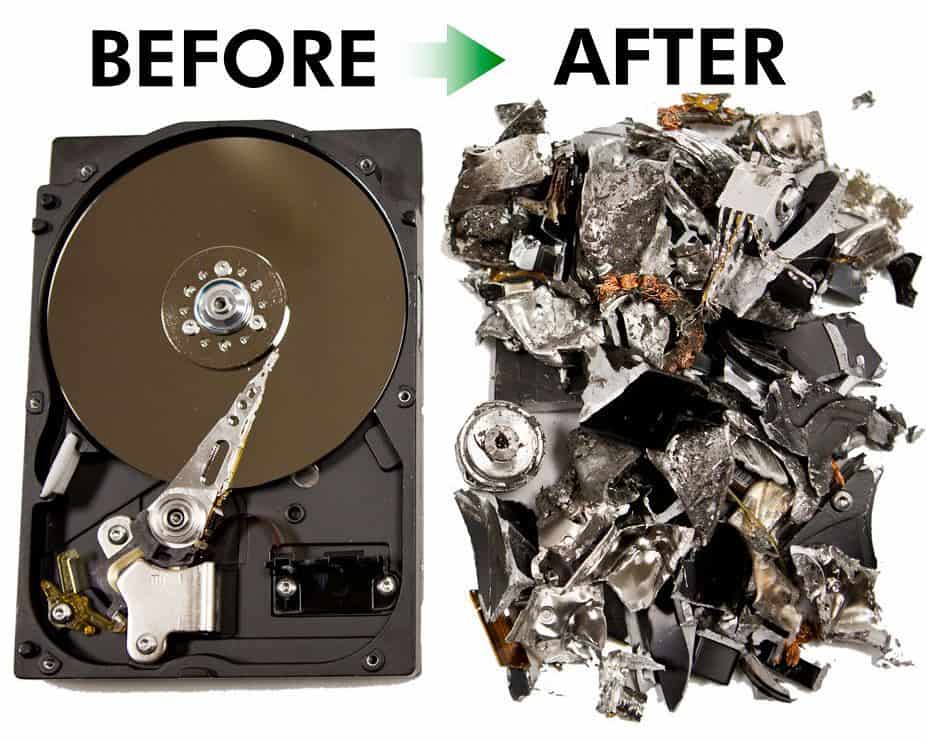Data Destruction Solutions: A Crucial Element in Your Cyber Security Technique
The Value of Effective Data Destruction Practices in Safeguarding Sensitive Info and Ensuring Computer System Protection
In a period where data violations are significantly common, the significance of efficient information damage techniques can not be overstated. Organizations face considerable threats when delicate details is improperly dealt with, potentially causing unauthorized gain access to and serious monetary consequences. Carrying out durable information damage techniques not only minimizes these threats yet additionally straightens with lawful conformity demands, making sure that organizations promote their reputation and foster customer trust fund. Nonetheless, the inquiry stays: what particular techniques can be employed to enhance these practices, and how can companies properly incorporate them into their overall cybersecurity structure?
Understanding Information Damage
Comprehending information damage is crucial in today's electronic landscape, where delicate details can quickly be jeopardized. Efficient information devastation entails not simply guaranteeing but removing files that information is irretrievable via extensive approaches. This procedure is important for organizations that handle private customer details, intellectual property, or inner papers, as any breach can bring about severe economic and reputational effects.
Data destruction incorporates various strategies, including shredding physical media, degaussing magnetic storage space tools, and utilizing software-based remedies that overwrite data several times. Each technique serves a particular purpose and must align with the sensitivity of the details being gotten rid of. Physical devastation is commonly chosen for difficult drives including highly personal data, while software application techniques might be enough for less sensitive details.
In addition, sticking to market requirements and policies, such as the General Data Defense Law (GDPR) or the Wellness Insurance Policy Mobility and Responsibility Act (HIPAA), is crucial for compliance and to mitigate lawful dangers. Organizations should develop a durable information destruction plan, train workers on best practices, and consistently investigate their procedures to make certain that all delicate info is dealt with firmly and successfully.
Risks of Inadequate Practices
Poor data devastation methods expose companies to significant threats that can have significant effects. When sensitive details is not appropriately dealt with, it continues to be susceptible to unapproved gain access to, which can bring about data violations and identity burglary. Such incidents not only endanger the safety and security of people yet likewise stain the organization's track record, resulting in a loss of client trust and prospective economic repercussions.
Additionally, governing compliance is progressively rigorous in numerous markets. Failing to follow data devastation regulations can result in large penalties and legal actions against companies. These fines can strain funds and divert attention from core company operations.
Furthermore, the abuse of recurring information can lead to intellectual property theft or business espionage, endangering affordable benefits (data destruction). The influence of poor information devastation expands beyond immediate financial losses; it can also result in long-term damage to brand integrity and market position

Organizations should acknowledge that data safety and security is not entirely regarding avoiding breaches; it also encompasses the responsible management of data throughout its lifecycle. Neglecting reliable information damage procedures can have tragic effects, underscoring the necessity for durable procedures to alleviate these dangers.
Best Practices for Data Damage
Carrying out efficient data destruction techniques is crucial for guarding sensitive information and maintaining browse this site conformity with regulative standards. Organizations needs to embrace a multi-faceted method to ensure that information is irretrievable, consequently avoiding unauthorized accessibility and prospective breaches.
First, information ought to be classified based on sensitivity, permitting organizations to use proper destruction approaches tailored to the degree of danger. For digital data, making use of software-based data-wiping tools that comply with sector requirements can properly overwrite existing data. Physical devastation techniques, such as shredding or degaussing, are crucial for tools that keep delicate information, making certain total obliteration.
Establishing a clear information retention policy is essential, detailing how much time different kinds of info should be preserved before destruction. Normal audits of data storage space systems are also necessary to determine obsolete or unnecessary data needing elimination.
Furthermore, training workers on the relevance of data damage and the certain methods to comply with fosters a society of protection within the organization. Keeping documentation of data damage refines provides accountability and supports compliance with external regulations and internal policies. By sticking to these ideal practices, organizations can considerably alleviate the threats connected with information exposure.
Legal and Compliance Considerations

Failing to adhere to these guidelines can cause severe charges, consisting of substantial penalties and reputational damages. Organizations should implement a durable data devastation policy that lines up with these legal structures and gives clear guidelines on the correct methods of information see here now disposal, whether physical shredding or digital wiping.
In addition, maintaining paperwork of information damage tasks is important for showing compliance throughout audits or examinations. By prioritizing legal and compliance considerations, companies can enhance their data protection posture and foster trust fund with stakeholders and clients, ultimately contributing to a much more safe and secure information management atmosphere.
Advantages of Effective Information Devastation
Efficient data damage practices prolong beyond plain compliance; they offer considerable advantages to companies that prioritize them. By ensuring that delicate info is irretrievably destroyed, companies mitigate the risk of information violations and the possible economic effects connected with them. This aggressive strategy not just safeguards versus unapproved access however additionally boosts the total credibility of the organization in the eyes of stakeholders and clients.
Carrying out durable information devastation approaches, such as physical damage of storage devices or innovative information wiping techniques, adds to the strengthening of a company's cybersecurity stance. data destruction. It minimizes the chance of intellectual home theft and protects exclusive info, thus maintaining an affordable edge out there

Final Thought
Finally, reliable information devastation practices are vital for securing delicate details and boosting total computer safety and security. By carrying out detailed approaches such as degaussing, software, and shredding overwriting, companies can mitigate the threats related to unapproved access and information violations. Adherence to regulatory standards, consisting of GDPR and HIPAA, further enhances conformity and safeguards versus legal repercussions. Ultimately, a commitment to robust information damage approaches fosters a click this culture of obligation, thereby reinforcing a company's cybersecurity stance and maintaining customer trust.
